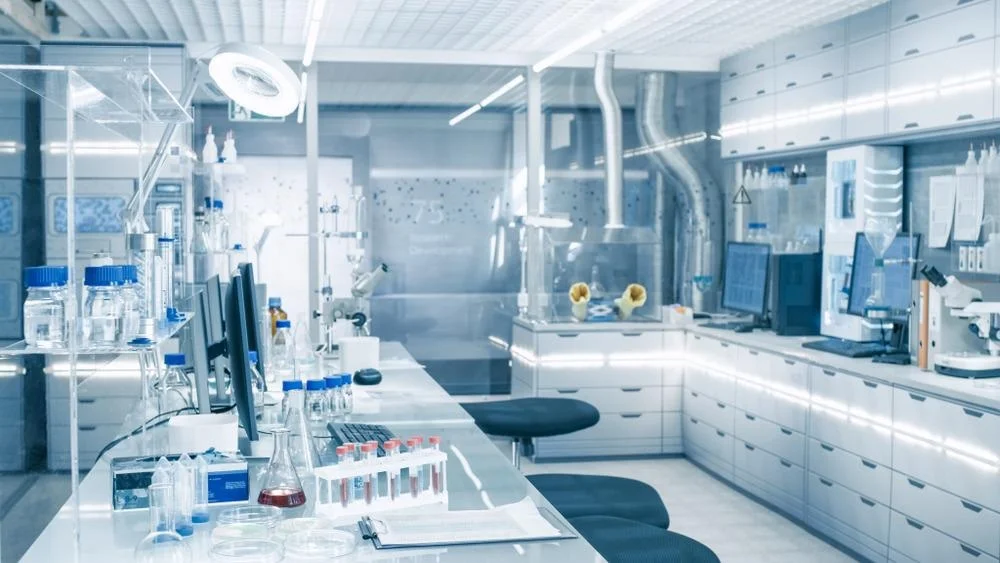ISO 14403 Determination of Organic Carbon in Water by UV Oxidation
The ISO 14403 standard is a critical tool for determining the concentration of organic carbon in water samples, particularly useful for assessing water quality and compliance with environmental regulations. This method utilizes ultraviolet (UV) light to oxidize organic compounds present in water. The resulting increase in oxidation demand provides an indirect measure of the total organic carbon content.
The process begins with the collection of a representative water sample. Proper sampling is paramount, as it directly influences the accuracy and reliability of the test results. Samples should be collected using appropriate containers that minimize contamination and stored under conditions that prevent changes in their composition until analysis can be conducted.
Once the sample has been prepared, the next step involves conditioning the water to remove any dissolved oxygen before conducting the UV oxidation process. This ensures accurate measurement by eliminating potential interference from other forms of organic matter or dissolved oxygen. After conditioning, a precise amount of water is dispensed into the reactor where it undergoes irradiation with UV light.
The intensity and duration of the UV exposure are critical parameters that must be controlled to ensure consistent results across multiple tests. Once exposed, the oxidized compounds produce measurable amounts of carbon dioxide which can then be quantified using standard analytical techniques such as infrared gas analysis or coulometric titration.
Accurate calibration of all instruments used in this procedure is essential for obtaining reliable data. Regular validation checks should also be performed to maintain instrument performance over time. Proper handling and storage conditions are necessary to preserve sample integrity until final analysis can take place.
The method provides valuable insights into the presence and extent of organic contaminants within a given water source, helping stakeholders make informed decisions regarding treatment processes and discharge limits. Compliance with environmental standards such as ISO 14403 ensures that facilities meet regulatory requirements while promoting sustainable practices.
Scope and Methodology
The scope of the ISO 14403 standard includes the determination of total organic carbon (TOC) in water samples using UV oxidation followed by measurement of the resulting CO2. This method is applicable to various types of surface waters, drinking waters, industrial wastewater, and other aqueous systems where TOC levels need to be evaluated.
| Parameter | Description |
|---|---|
| Samples | Surface water, ground water, potable water, waste water |
| Temperature | 25 ± 1°C for TOC analysis |
| pH Range | 6.0 to 9.0 before conditioning |
| UV Wavelength | 254 nm |
The procedure involves several steps including sample preparation, pretreatment (such as degassing and conditioning), UV irradiation under controlled conditions, and subsequent detection of released CO2. Each step requires careful execution to minimize errors and ensure reproducibility.
Customer Impact and Satisfaction
- Facilitates compliance with environmental regulations by providing accurate TOC measurements.
- Supports decision-making processes related to water treatment plant operations.
- Aids in identifying sources of organic pollution affecting drinking water supplies.
- Enables the assessment of effectiveness of different wastewater treatments.
Our clients appreciate our commitment to delivering high-quality results consistently. By adhering strictly to ISO 14403 guidelines, we ensure that every test conducted meets international standards and provides actionable data for stakeholders involved in water resource management.
International Acceptance and Recognition
- The ISO 14403 standard has been widely adopted by countries around the world as a reliable method for TOC determination.
- Many government agencies, regulatory bodies, and private sector organizations rely on this technique to monitor water quality.
This widespread acceptance underscores its importance in maintaining global standards for environmental protection. Compliance with ISO 14403 helps businesses demonstrate their commitment to sustainability and responsible resource use.





